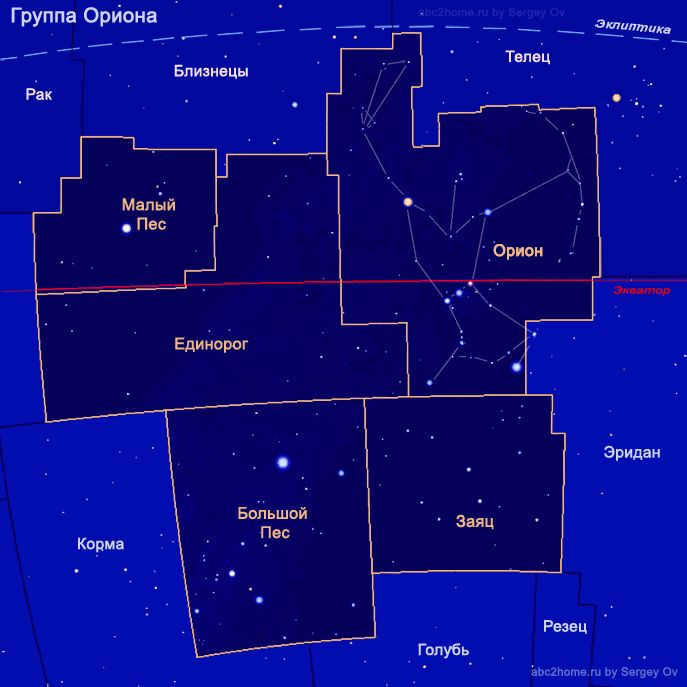During the summer months, the night sky presents a mesmerizing display of stars. However, there are certain celestial formations that are best observed during the colder season. One such enchanting constellation is Orion. With a grand total of 209 stars that are visible to the naked eye, Orion stands out due to its abundant collection of bright cosmic elements that are easily discernible from our planet. For optimal viewing, it is recommended to observe Orion between the months of November and January.
Recognized worldwide
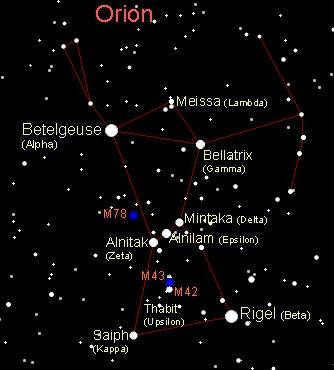
The appearance of the Orion constellation is familiar to nearly all people on Earth, as it can be seen in both the northern and southern hemispheres. This is due to the stars being positioned along the celestial equator.
In the winter late evenings in the southern part of the sky, the constellation Orion can be easily spotted in the Northern Hemisphere. During this time, the three stars that make up Orion’s belt can be seen close to the horizon line, slightly angled. There are eight bright stars that form a recognizable silhouette, representing Orion the hunter with his sword, club, and shield. This celestial pattern has been linked to Orion since ancient times.
The legend of the constellation Orion is introduced to children not through astronomy lessons, but by exploring the ancient Greek myths. According to the stories, this heroic figure, who would later be immortalized in the night sky, was a skilled hunter captivated by the beauty of the Pleiades – the nymphs who served the goddess Artemis. Despite his best efforts, Orion failed to communicate with the nymphs, who were embarrassed and quickly sought the protection of their patroness. In response, Artemis transformed the seven Pleiades into doves, which gracefully ascended into the heavens and formed their own constellation.
Instead of dwelling on his sadness over the nymphs, Orion swiftly shifted his affections to Merope, the daughter of Oinopion, the ruler of Chios. In order to win her hand in marriage, Merope’s father required the hero to accomplish a great deed. However, Orion opted to pursue his own course of action: he planned to abduct Merope. Upon discovering the hunter’s intentions, the king retaliated by blinding him.
Demise of a Hero
Orion spent a considerable amount of time roaming the earth in solitude, desperately seeking someone with the ability to restore his vision. Eventually, he encountered one of the Cyclopes, who took pity on him and brought him to Helios. The sun god possessed the power to grant the hero his sight once more. Without hesitation, Orion returned to his beloved pastime. While in pursuit of his prey, he caught the attention of Artemis, who had a deep passion for hunting herself. Orion quickly became her lover, much to the dismay of Apollo, the goddess’ brother. Determined to eliminate the hunter, Apollo devised a cunning plan. Knowing Artemis’ pride, he engaged her in conversation and questioned her accuracy in archery. He proposed a challenge for her to hit a distant, glimmering dark spot in the waters of the sea to test her skills. Oblivious to the fact that the target was Orion’s head, as he had decided to take a swim, the goddess effortlessly accomplished the task.
Artemis soon discovered that she had unintentionally caused the death of her beloved Orion. Grieving for him, she made a solemn vow to always remember him and immortalized him by placing him among the stars. Thus, the constellation Orion began to shine brightly in the night sky. Myths also tell a different version of the hero’s fate. According to this version, Orion valiantly battled ferocious beasts that posed a threat to the people of Chios Island, hoping to win the heart of the beautiful Merope and marry her. Despite his victories, he was not able to win her over and instead was captured and blinded by Merope’s father. However, after encountering the sun god Helios, Orion’s sight was restored. Unfortunately, his life ended tragically when he was killed by a wrathful Artemis, who was the protector of wild animals.
The constellation of Orion, as it appears in the present day, was observed numerous millennia ago. This particular depiction of the celestial pattern is one among several illustrations featured in Claudius Ptolemy’s catalog known as “Almagest,” which was compiled around 140 AD. The ancient civilizations’ fascination with Orion was not coincidental: this constellation boasts a plethora of luminous components that are easily visible from our planet, captivating the attention of inquisitive observers. Even in modern times, scientists continue to explore the wonders within this celestial configuration, with many of its objects having been extensively investigated.
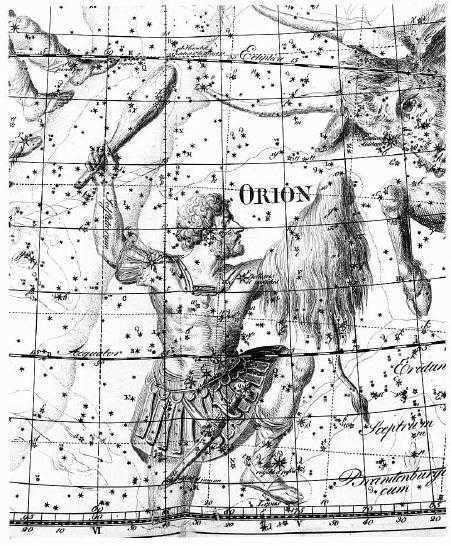
Rigel and Betelgeuse are the two most luminous stars in the Orion constellation. By guiding ourselves with these two reference points, it becomes effortless to locate the complete figure of the hunter in the celestial sphere.
Alpha Orionis
Betelgeuse, the name of this star, originates from the Arabic word meaning “armpit.” This name perfectly describes its position in the constellation of Orion, as it is located on the right armpit of the celestial hunter. Betelgeuse shines with a brightness that is fifteen thousand times greater than that of the Sun. In terms of size, it surpasses even the orbit of Mars. Classified as a red supergiant, this star is located at a distance of 540-650 light years from Earth. It is also considered a semi-regular variable star, meaning its visual brilliance undergoes changes over time. The magnitude of these changes for Betelgeuse ranges from 0.4 to 1.3, and the main period of variation lasts for approximately 6 years.
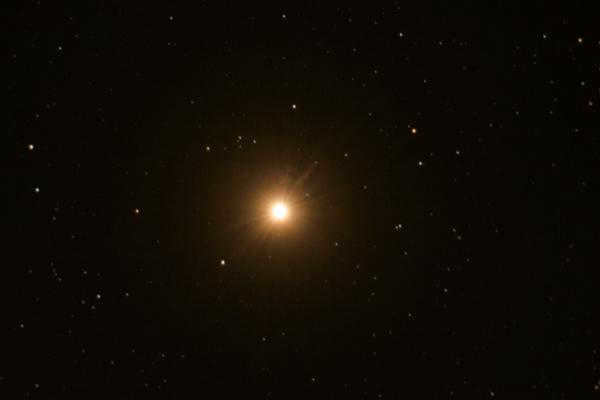
Beta Orionis
While Betelgeuse is considered the alpha star of the Orion constellation, it is not the brightest point within the figure. Rigel, which means “foot” in Arabic, surpasses Betelgeuse in terms of brightness. Rigel’s luminosity is over 130,000 times that of the Sun, and it is estimated to be located between 700 and 900 light years away from us. Rigel is the closest star to Earth with such a high luminosity, and it has a visual stellar magnitude of 0.12.
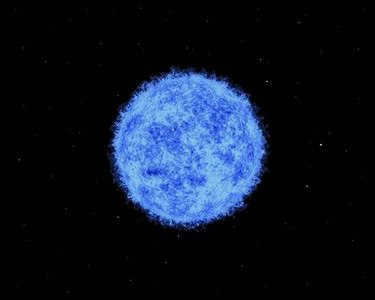
Rigel, a member of a stellar system, is a dazzling blue-white supergiant. Rigel B, its companion, is noticeably dimmer, with an estimated apparent stellar magnitude of +6.7. The separation between these two components measures approximately 2200 astronomical units. Due to the close proximity to the brilliant supergiant, Rigel B can only be observed through a telescope. Additionally, the stellar system features a third component, Rigel C.
Short lifespan
The lifespan of certain stars in the Orion constellation, like Betelgeuse and Rigel, is relatively short due to their massive size and high luminosity. Both objects are estimated to be around 10 million years old, much younger than our Sun, which is already over 4.5 billion years old. These stars will not survive as long as our Sun. The immense mass of these stars creates significant pressure, causing their internal fuel to burn out quickly. Consequently, the star’s core eventually collapses into a neutron core. The outer layers of the star will then collide with the core and rebound at an incredibly high speed, resulting in a type 2 supernova explosion.
Rigel and Betelgeuse are both destined for a similar fate. When they explode, the arrangement of the hunter in the sky will undergo significant changes compared to its current appearance. The collapse of Rigel will be observable from Earth both during the day and at night. The star will diminish gradually, resembling a quarter of the Moon in brightness and eventually becoming a faint speck. Scientists predict that Betelgeuse will continue to exist for at least two thousand years, and after its explosion, it will be as large as the Moon. In this state, the star will last only a few weeks before also fading away. However, these events belong to the distant future, while the brilliant stars in the constellation Orion continue to captivate us with their luminosity.
Belt
The constellation contains numerous asterisms, which are distinct groups of stars with their own names. The hunter’s belt is one of these asterisms and it allows both children and adults to easily identify the constellation Orion throughout the year. Comprised of three relatively bright stars, namely Mintaka (delta, derived from the Arabic word for “belt”), Alnitak (zeta, meaning “pearl belt”), and Alnilam (epsilon, “girdle”), this asterism is also referred to as “The Three Kings” or “The Rake”. These three luminous points form an almost perfectly straight line and are equidistant from each other. If one extends the southeastern end of this line, it will lead to Sirius, which is the brightest star in the night sky. The northwestern end of the line can be extended to reach Aldebaran, the red star located in the constellation Taurus.
The distinctive shape of the constellation is formed by a group of stars known as the Sheaf or Butterfly. These stars include Betelgeuse, Rigel, Bellatrix (gamma), Alnitak, Mintaka, and Saif (kappa).
Gamma Orionis, also known as Bellatrix, is the third brightest star in the constellation. It is classified as a blue-white giant and has an apparent magnitude of 1.64. While its luminosity is 4,000 times greater than that of our Sun, its mass and radius are not as remarkable. It has a mass of approximately 9 times that of the Sun, and its radius is only 5.7 times larger. Bellatrix is a relatively young star, with an age of around 10 million years. Scientists predict that it will evolve into a red giant in a few million years.
The white-blue star Saif is positioned at a similar distance from Earth as Rigel, but appears to be much dimmer because a large portion of its energy is emitted in the invisible spectrum. Saif has a luminosity that is 5,500 times greater than that of the Sun, and its diameter is 11 times larger.
The primary weapon
The Sword is another well-known asterism that is part of the Orion constellation. It consists of two stars, θ and ι (theta and iota), as well as the Great Orion Nebula.
Theta is a multiple star system made up of four bright components and an equal number of less prominent ones. They form a small quadrilateral known as Orion’s Trapezium. These cosmic objects are relatively young and formed from interstellar gas and dust. The material for these luminaries originated from an invisible cloud located in the eastern part of the constellation, known as the Great Orion Nebula.
“Stellar nursery.”
The hunter’s powerful weapon contains the birthplace of aspiring stars. The Orion Nebula, also known as M42, is where numerous cosmic objects are born. It is located 1500 light years away from us, but if you want to observe it with your bare eyes, you need to gaze at the region below Orion’s belt. M42 appears as a small dot resembling a comet. In images captured by high-powered telescopes, the nebula is incredibly stunning. Not only is it renowned for its impressive size and reddish glow, but it also serves as a habitat for numerous star nurseries, where future luminaries take shape. This particular region is the closest one to us. What sets the Great Orion Nebula apart from other star nurseries is the minimal interference from gas and dust clouds, allowing for unhindered study of the star formation process. Consequently, the majority of our current knowledge regarding star formation is derived from observations of M42.
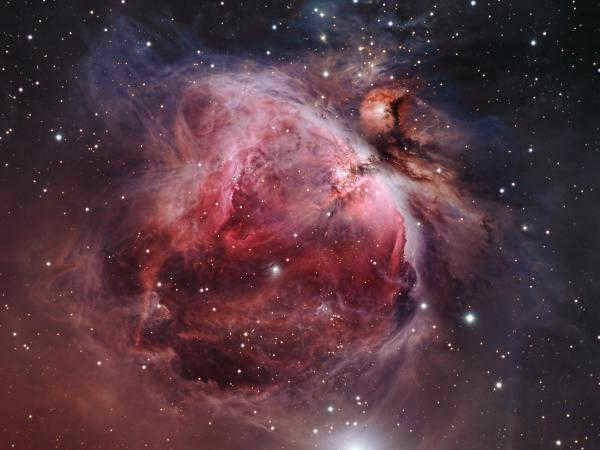
Dark Hole
The chart of the Orion constellation has recently been updated with a new and intriguing discovery near the Trapezium. Research has indicated that during the development of the M42 nebula, numerous star collisions occurred, potentially leading to the formation of a dark hole with a mass exceeding that of the Sun by a factor of one hundred. This hypothesis aligns well with the observed high velocities of the stars comprising the Trapezium in Orion. Should the existence of this dark hole be verified, it would become the nearest known object of its kind to the solar system.
The head of a male horse
Animal-like shapes can be found not only in constellations in the sky. One well-known example is the Horsehead Nebula (or B33) in the Orion constellation. This nebula bears a striking resemblance to the shape of a horse’s head. The clear outline of the Horsehead Nebula is visible due to the illumination provided by another nebula in the background. Unlike this background nebula, B33 does not emit light and is instead classified as an absorbing nebula. Without the bright background, the Horsehead Nebula would be difficult to see. However, detecting it is still a challenge even with advanced instruments, making it a marker of the equipment’s performance and accuracy.
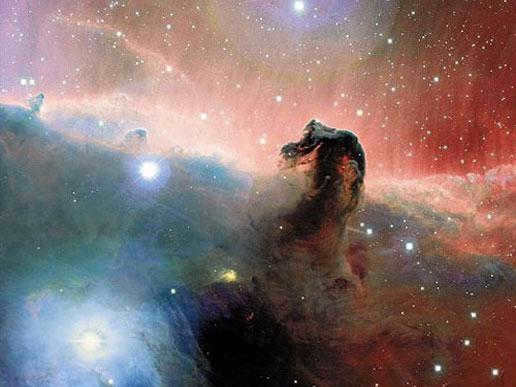
Shining with luminosity
The depiction of the appearance of the constellation Orion would not be comprehensive if we didn’t mention a variety of other nebulae, which are often overlooked by researchers because they are less visually striking. These nebulae are called reflection nebulae. While they may pale in comparison to the prominent M42, they still hold some interest. The nebulae NGC 1977, NGC 1975, and NGC 1973 are situated in the Sword of Orion, slightly to the north of M42. These nebulae have a bluish hue in images due to the reflection of light from bright young stars by cosmic dust. In telescope photographs, the three nebulae, separated by dark areas that are illuminated by the reddish emission of hydrogen atoms, create the outline of a running man – another easily recognizable figure in the constellation Orion.
The Flame Nebula, also known as the Torch Nebula, is remarkably stunning. It is yet another celestial location within the Orion constellation where new stars are continuously being formed. In the captured images, it bears a striking resemblance to a raging fire, with luminous clouds adorned with dark specks, reminiscent of flickering flames. Situated in close proximity to Orion’s sigma, the Torch Nebula is illuminated by its radiance. The distance separating us from this nurturing abode of youthful stars measures approximately one thousand light years.
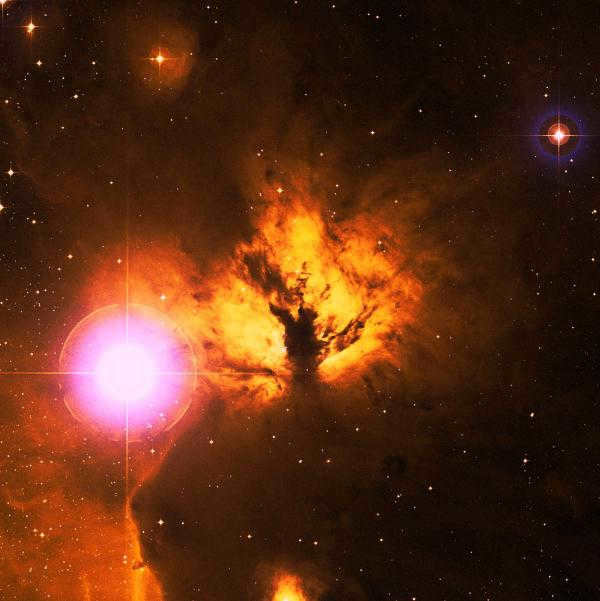
The constellation Orion, which was described earlier, is widely regarded as one of the most stunning celestial illustrations. The brilliant stars that form it allow for the silhouette of the legendary hunter to be visible almost continuously. Because of this, once the observer has determined its location, they will never again wonder how to locate the constellation Orion. For the amateur astronomer, this celestial pattern is especially valuable because many of its components can be observed directly with the naked eye. Other elements, such as a portion of the Great Orion Nebula, can be observed using a small telescope or even binoculars.

Undoubtedly, one of the most popular constellations in the celestial sphere is Orion. It is interesting to note that this region is situated on the celestial equator, making it part of the equatorial regions. It holds the 26th position in the constellation ranking, covering an area of 594 square degrees, as determined by scientists.
It is worth mentioning that neighboring Orion in the night sky are the constellations of Gemini, Unicorn, Hare, Taurus, and Eridanus.
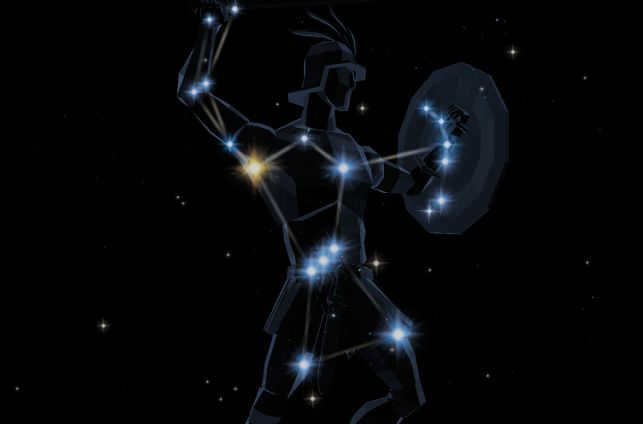
Legend of the constellation Orion
In ancient times, it was widely believed that Orion, the son of Poseidon and Euryale, was a skilled hunter and renowned for his exceptional beauty. As a result, he came to symbolize bravery and courage.
Naturally, there are numerous myths and tales surrounding Orion. One such story recounts his infatuation with the seven Pleiades. He relentlessly pursued them, but Zeus intervened and concealed the sisters in the night sky within the constellation Taurus. As a result, the legendary hunter continues his eternal quest to find them.
A narrative is a fact that transforms into a falsehood. A legend is a falsehood that transforms into a fact.
Jean Cocteau
As per an alternate myth, a courageous individual who battled a bull (Taurus) resided in the celestial realm.
Despite the variations in stories, the demise of the character remains consistent. It is believed that he met his end at the hands of a scorpion. The sting of the scorpion proved to be the deciding factor for the heroic hunter. This could be the reason why, in the constellation, Orion descends in the western sky. Almost as if evading the scorpion.

However, there is another well-known legend surrounding Artemis, in which she becomes infatuated with an incredibly handsome gentleman. Unfortunately, Apollo vehemently opposes her decision to abandon her vow of celibacy. As a result, he cunningly deceives her into relinquishing her bow and arrow. He then proceeds to direct her attention towards a target that she must aim for. Oblivious to the consequences, the maiden obediently takes aim and releases her arrow, unknowingly striking her beloved. Thus, unfolds a tragically sorrowful tale of love.

Orion’s constellation composition
Undoubtedly, this constellation encompasses numerous fascinating astronomical entities. Interestingly, we are familiar with many of them to some extent. Let us attempt to comprehend the constituents of Orion.
Shining celestial bodies
Interestingly, the initial trio of celestial objects are also the most brilliant in the vicinity.
Alpha and Beta are highly renowned supergiants. However, the central star (Alpha) Betelgeuse exhibits a red hue. It is also classified as an irregular variable entity. In fact, it is one of the largest stars in existence. Furthermore, it possesses a luminosity that is 14,000 times greater than that of the Sun. Remarkably, despite being situated 650 light years away from Earth, it is still visible to us. Strikingly, its name translates to “hand,” or more specifically, “armpit.”
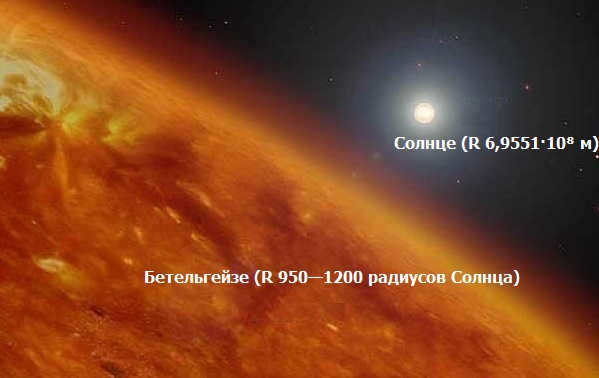
And there it goes Beta. – is a luminary that shines in a blue-white color. Rigel.. It is located near the equator. And its name means leg. Its brightness is 130,000 times greater than that of the Sun. In fact, Rigel is the nearest star to us that is both bright and powerful. However, it is located 860 light-years away from Earth.
Gamma — Bellatrix is a giant star that shines in a blue-white color. It is also one of the hottest and most luminous stars.
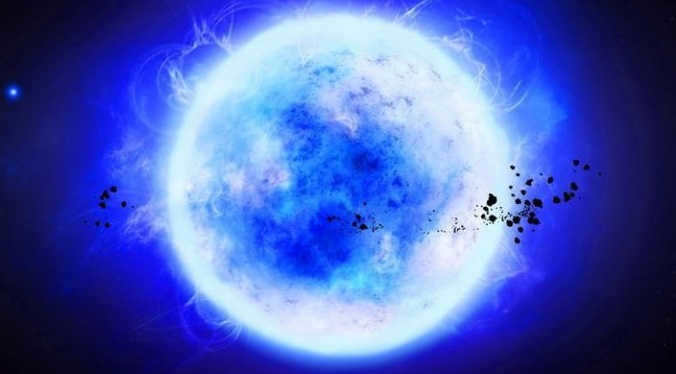
Other celestial bodies
The Delta star system — also known as Mintaka, is a binary system. It experiences eclipses and is variable in nature.
Epsilon — also known as Alnilam or star 46, is believed to be a hot supergiant with a deep blue hue, according to scientists.
Zeta — consists of Alnitak and Sigma, which are multiple star systems. Sigma, in particular, comprises five luminaries.
Kappa — includes Saif and Lambda, which are both blue supergiants.
Iota — is an entire system of luminaries centered around Nair Al Saif. Another example is Pi, which is a group of stars consisting of seven objects.
Phirefers to two systems. One is a double star and the other belongs to the main sequence.
This constellation exhibits a variable double structure.
Tau is classified as a B5III star, and it has a dim companion. It belongs to the main-sequence chi dwarf category.
An orange dwarf, Gliese 208.
V 380 is a trio of stars.
A red dwarf called GJ 3379.
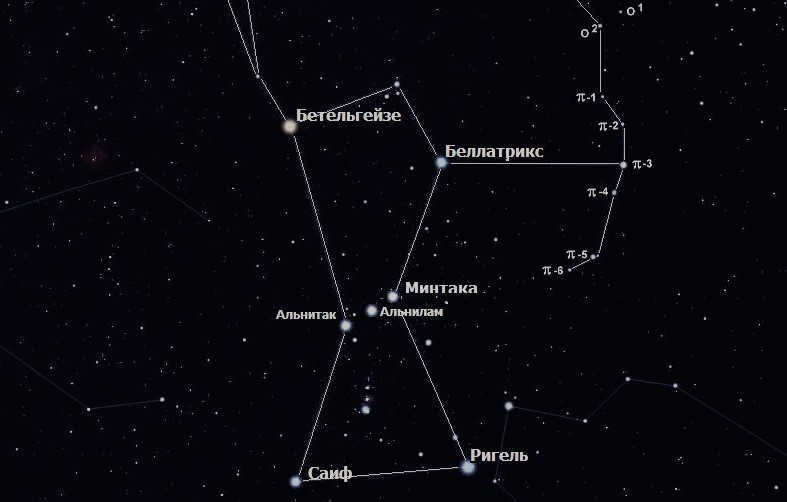
Constellation Patterns
Reportedly, the region mentioned is where the most constellation patterns have been discovered. Without a doubt, these patterns contribute to the overall formation of the constellation itself. It can be said that they are individual components of it.
However, the Sheaf pattern is known as the Sheaf asterism. It is also referred to as the Butterfly. It consists of Alpha, Beta, Gamma, Zeta, Delta, and Kappa.
Equally renowned is the constellation known as Orion’s Belt. This group of stars is also referred to as the Three Kings, the Three Magi, the Three Myrians, and the Grables. As you can observe, it consists of three bright stars: Mintaka, Alnitak, and Alnilam.
Furthermore, The Sword of Orion consists of Theta, Iota, 42 Orions, and M42 (the Great Nebula).
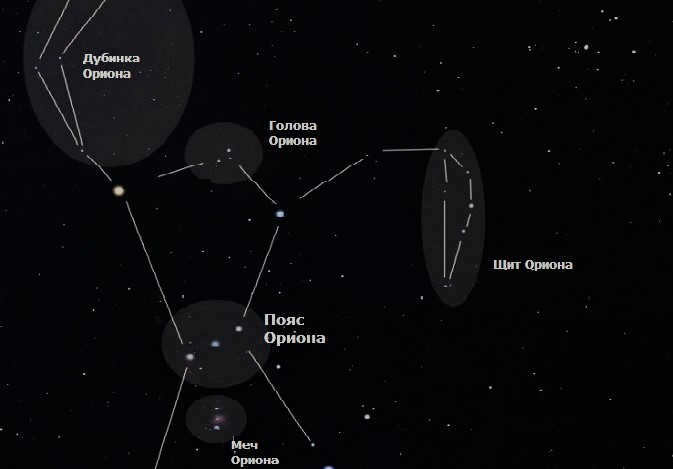
Furthermore, there exists the asterism called Orion’s Shield. It showcases a group of six entities arranged in an arc. This arrangement is formed by the Pi group, with the stars positioned at wide intervals. It is intriguing to note that in ancient times, this region was referred to as the shell of the tortoise.
On the northern side lies Orion’s club. It is composed of five celestial bodies: Xi2, Hi1, V, Xi, and the 69 star.
Another notable asterism is The mirror of Venus. It actually consists of similar components to the Belt. In appearance, it resembles a mirror with a diamond shape, where the Sword asterism acts as a hilt.
Celestial objects
The Orion cloud is a collection of dark clouds, nebulae, star-forming regions, and young stars.
The focus is on the Orion Nebula, a diffuse reflective cloud often called the Great Nebula. It is important to mention that this region is one of the closest areas to us where massive star formation occurs. Additionally, it is part of the Constellation Cloud.
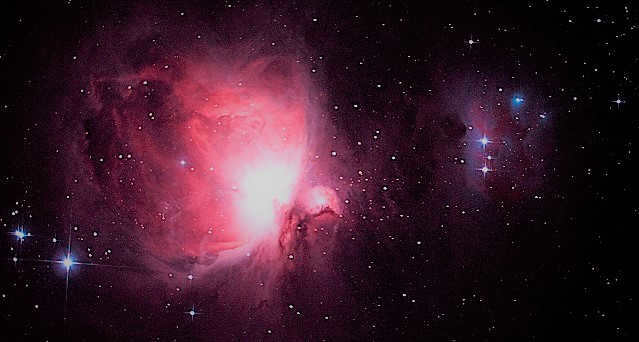

Trapezium is an open cluster of young stars. It is currently thought to contain eight stars, but only five of the brightest ones emit visible light. There is also another cluster that has been discovered, known as Cluster 37. The name is derived from its shape, as the arrangement of stars resembles the numeral.
The De Meran Nebula is a region of emission and reflection. Although it is considered to be part of the larger nebula, it is separated from it by interstellar dust.
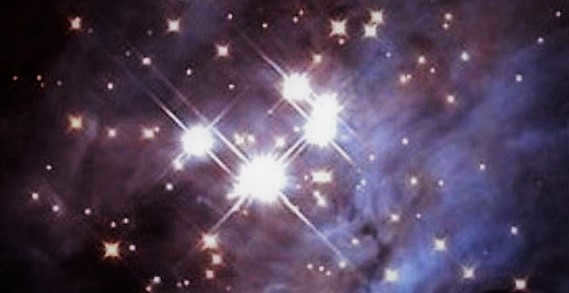
This is the location of the reflection nebula known as Messier 78 and the dark nebula referred to as the Horsehead Nebula.
Another interesting feature is the Bernard Loop, also known as Bernard’s Loop. It is an emission nebula located within molecular clouds.
In addition, other emission nebulae have been discovered in this constellation, such as The Flame illuminated by Zeta and Monkey’s Head.
Another noteworthy object is the reflective nebula NGC 2023, which is known for being one of the brightest sources of fluorescent molecular hydrogen.
Furthermore, the constellation Orion is home to two meteor streams: the Orionids and the Hy-Orionids.
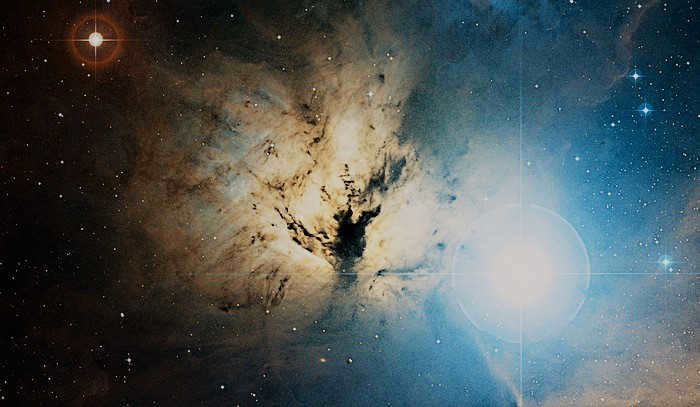
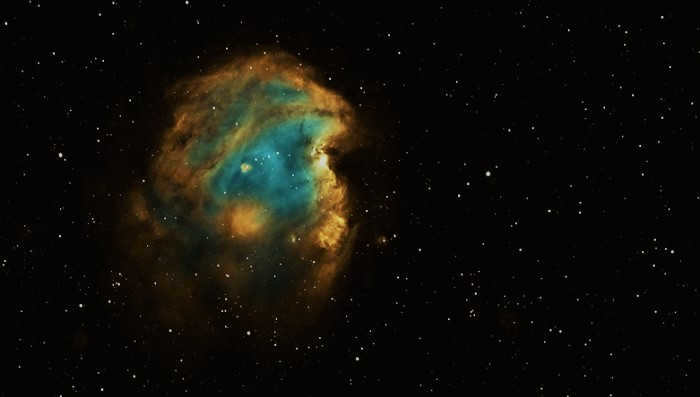
Observing the Orion constellation
According to astronomers, the Orion constellation is visible during the autumn and winter seasons, with its visibility ranging from +79 to -67.
However, in some regions, it can be seen easily starting from late summer. It is also prominently visible from Russia.
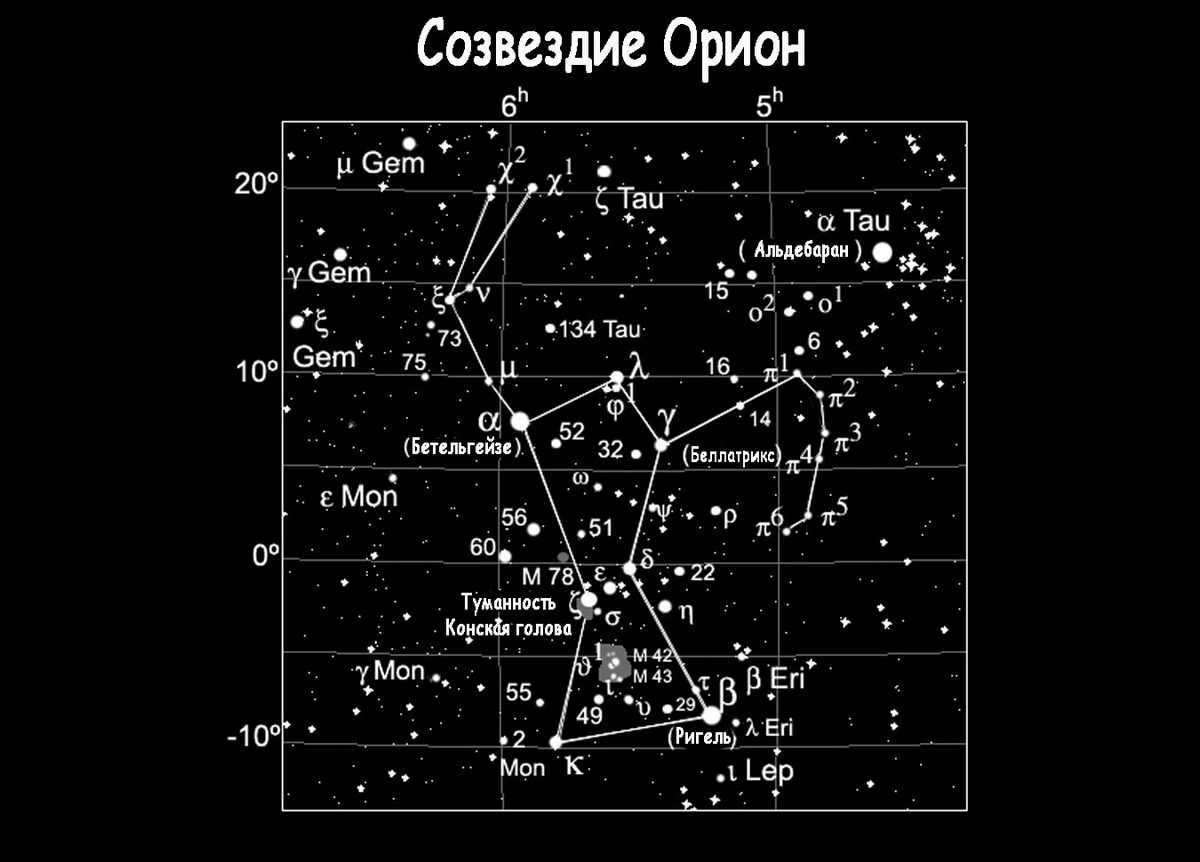
The constellation Orion is renowned for its exquisite beauty, making it a captivating sight in the night sky. Boasting a collection of brilliantly luminous stars, this constellation effortlessly evokes the image of a hunter when one merges these stars and unleashes their imagination. Orion’s figure extends from the southeast, directing attention towards the mesmerizing blue giant known as Sirius, which can be found in the constellation of the Big Dog. On the northwest side, it elegantly aligns with the radiant red Aldebaran, nestled within the constellation Taurus. Spanning an impressive area of approximately 594 square degrees in the celestial expanse, Orion easily stands out among the other celestial formations, thanks to its striking silhouette.
Constellation Orion
The constellation Orion is visible during the late summer, fall, and winter months, and can be observed until mid-April. It is a prominent constellation that can be seen throughout Russia, and it is commonly associated with the autumn and winter seasons.
Fascinating Objects
One of the interesting features within the constellation is the presence of Nebulae located in Orion’s belt. These nebulae add to the beauty and intrigue of the constellation.
On a clear, moonless night, with a careful observation of the constellation, it is possible to spot around 200 stars. Among these stars, there are specific objects that contribute to the outline of Orion. Three extremely bright stars with a stellar magnitude of zero form the main part of the outline, while five stars with a second stellar magnitude and four stars with a third stellar magnitude complete the shape. Additionally, within the constellation, there are variables, nebulae, hot star associations, and asterisms. Notable bright stars within Orion include Rigel and Betelgeuse.
The celestial bodies
Betelgeuse – represents a red supergiant star. The term “Betelgeuse” originates from Arabic and translates to “armpit”. This star is known for its irregular variations in brightness, which can range from 0.2 to 1.2 magnitudes. On average, Betelgeuse has a brightness of 0.7 star magnitudes. Its immense distance from us spans 430 light years, and it radiates a luminosity that is 14,000 times stronger than our own solar luminary.
Image: Nebula surrounding the vibrant red supergiant Betelgeuse
Betelgeuse holds the distinction of being one of the largest stars ever observed. If we were to replace our Sun with Betelgeuse, its size would extend to the minimum distance between Earth and Mars. At its maximum size, the surface area of this star would encompass roughly the orbit of Jupiter. Its volume surpasses that of our Sun by a factor of approximately 160!
Image: Star Rigel and the Witch’s Head Nebula
Rigel, a blue-white supergiant, derives its name from the Arabic word for “foot”. With an almost negligible stellar magnitude, Rigel is located at a distance of 770 light years from our planet. This colossal star boasts a scorching surface temperature of 11200 K. Its diameter measures a staggering 68 times that of our Sun, equivalent to a mind-boggling 95 million kilometers. Undoubtedly, Rigel reigns as the most dominant celestial body within close proximity to Earth. In ancient Egyptian mythology, Rigel was closely associated with Sah, who was revered as the king of the stars and the protector of the deceased.
Star systems
One interesting point to mention is the presence of the θ Orion multiple star system located in the Sword area. This system is responsible for outlining the Trapezium of Orion and is composed of four unique elements.
A fascinating video compilation showcasing a collection of photographs captured by the Hubble Space Telescope.
Nebulae
The Orion Nebula is easily visible in a small telescope and holds the distinction of being the first nebula ever photographed by astronomers.
Experience a captivating 3D Animation of the Orion Nebula
All of the images below have been captured using a variety of filters and exposure times lasting for several hours.
Another variation of this nebula
The Horsehead Nebula is a nebula that bears a striking resemblance to the silhouette of a horse’s head.
Photograph of the Horsehead Nebula
Close-up photograph of the Horsehead Nebula, showing an enlarged fragment
Image of Orion’s Belt Asterism
Orion consists of several asterisms, including the Butterfly, Magus, Belt, Sword, Shield, Stick, Mirror of Venus, and Pan. These asterisms are intricately connected to one another. In reality, the entire constellation forms a vast collection of asterisms.
Planetarium program depiction of Orion’s Belt
Background
The historical background of the constellation Orion can be traced back to ancient times. In ancient Egypt, this particular constellation held a special significance as it was considered the ruler of the stars. Similarly, in ancient Babylon, it was referred to as the “Faithful Shepherd of the Heavens.” The ancient Greeks also had their own interpretation of Orion, seeing it as a depiction of a human figure formed by the arrangement of stars. According to Greek mythology, Orion was the son of Poseidon and Euryale, and Poseidon had placed him in the sky for eternity. These different cultural interpretations have contributed to the rich history and symbolism associated with the constellation Orion. Today, it continues to be recognized and cataloged in the Almagest, a renowned catalog of starry skies.
Take a brief tour of the constellation here.
The southeast side of the figure points towards the blue giant Sirius, located in the constellation Big Dog. On the northwest side, it points towards the shining red Aldebaran, located in the constellation Taurus. This constellation occupies an area of approximately 594 square degrees in the sky. It is easily recognizable in the night sky due to its bright outline.
The constellation of Orion
Stargazing
The Orion constellation is visible during the late summer, fall, and winter seasons. It remains visible until mid-April and can be seen all over Russia. It is known as an autumn-winter constellation.
Fascinating Celestial Objects
If you observe the arrangement of stars in the sky on a night when there is no moon and no clouds, you will be able to easily identify 200 stars. Within this group, there are certain objects that form the shape of the constellation Orion. These objects consist of three extremely bright stars with a stellar magnitude of zero. Additionally, there are five stars within the constellation with a second stellar magnitude and four stars with a third stellar magnitude. Within this collection of stars, there are also variable stars, nebulae, hot star associations, and asterisms.
Stellar Objects
Betelgeuse is a red supergiant. In Arabic, Betelgeuse means “armpit.” It is an irregular variable star. The brightness of Betelgeuse varies from 0.2 to 1.2 magnitudes. On average, this enormous star has a brightness of 0.7 magnitudes. The distance from Earth to Betelgeuse is approximately 430 light years. It shines over 14,000 times brighter than our sun.
This star is one of the largest stars ever observed. If Betelgeuse were to replace our Sun, it would stretch all the way to Mars at its closest point. At its farthest point, its surface would extend to roughly the orbit of Jupiter. Its volume is approximately 160 times greater than the volume of our Sun!
Rigel, a blue-white supergiant, is known as the “foot” in Arabic. With an almost zero stellar magnitude, Rigel is located 770 light years away from Earth. This massive star boasts a surface temperature of 11200 K and a diameter 68 times that of our Sun, equivalent to 95 million kilometers. Rigel holds the title for being the most powerful star in close proximity to our planet. In ancient Egypt, Rigel was associated with Sah, the king of the stars and the patron saint of the dead.
The θ star system in Orion’s Sword is worth mentioning as it outlines the Trapezium of Orion and is composed of four elements.
This is a unique video comprised of multiple images captured by the Hubble Space Telescope.
The wonders of the Nebulae
With a small telescope, one can easily observe the Orion Nebula, which holds the distinction of being the first nebula ever captured in a photograph by astronomers.
The Orion Nebula’s 3D Animation
Below you will find a collection of images captured using various filters, bands, and extensive exposure time.
The M42 nebula
Change the text to make it unique, using English language and keeping the HTML markup:
A different version of the celestial cloud
The Horsehead Nebula
The Horsehead Nebula, a larger section that has been magnified
Constellations
Orion Belt Asterism
The Orion constellation consists of several interconnected asterisms, including the Butterfly, Magus, Belt, Sword, Shield, Stick, Mirror of Venus, and Pan. In fact, the entire constellation can be seen as one extensive collection of asterisms.
Image of Orion’s Belt taken from a planetarium software program
Background
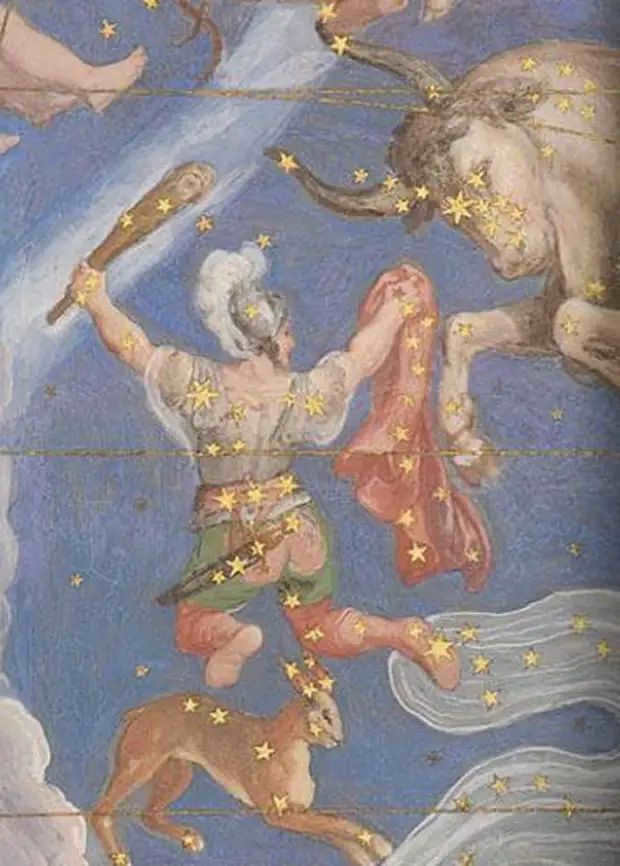
The Orion constellation, depicted in an ancient sky atlas
Regarded as the ruler of the stars in ancient Egypt, this constellation was known as the “Faithful Shepherd of the Heavens” in ancient Babylon. In ancient Greece, it was seen as a figure of a man formed by a group of stars. Orion is said to be the son of Poseidon and Euryale, and was placed in the sky by Poseidon. It is listed in the Almagest catalog of the celestial sphere.
An overview of the star formation
Did you find the article enjoyable? Make sure to subscribe to the channel for the latest captivating content.
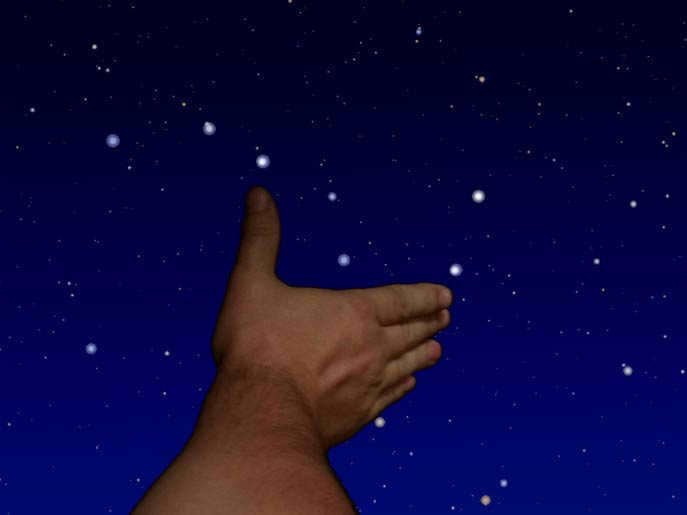
To learn how to locate constellations in the night sky, all you need to know is the ancient asterism called the “Big Bucket” – the seven brightest stars in the Big Dipper constellation can guide you in searching for stars in other constellations.
Typically, searching for constellations on a clear night involves locating and identifying the brightest stars.
The list of diagrammatic drawings and algorithms for finding constellation stars is presented in a sequence where each subsequent step builds upon the information from the previous materials, drawings, and schemes.
We will start our journey through the stars by exploring the Big Dipper constellation.
How to locate the Big Dipper constellation
When trying to locate the Big Dipper constellation, one can usually rely on its primary asterism, the Big Dipper. It is advisable to have someone point out the Big Dipper to you. Observing this distinctive arrangement of seven stars in the sky at least once is sufficient to ensure that the Big Bucket will forever be visible to you. However, what should one do if there is no one available to indicate the location of the Big Kovsh?
In the spring, during the late evening hours at the latitude of Moscow, something fascinating happens. The Big Dipper constellation aligns perfectly with the zenith, which means that during this time, you can actually see the Big Dipper right above your head. All you need to do is accurately determine the angular dimensions of the ladle and visualize its shape using the stars (Fig. 5.UMa).
The distance between the star Benetnash at the tip of the handle and the star Dubhe at the far end of the scoop is approximately 26 degrees. To put this into perspective, the angular distance between an adult’s outstretched thumb and index finger is about 16-18 degrees. So, if you were to hold your hand out and compare it to the Big Dipper, it would roughly resemble the image shown in Fig. 5.UMa.

Fig. 5.UMa. Determining the angular dimensions of the Large Container by extending your arm.
What should you do if you have to wait too long for the highly desired spring?
– In such a situation, it is advisable to prepare a compass and utilize our virtual star chart, which allows you to approximately identify the location of the portion of the sky corresponding to the constellation.
A comprehensive guide on various techniques for locating the stars of the Big Dipper: How to locate the constellation of the Big Dipper.
In order to locate the constellation of the Little Bear, it is essential to be familiar with the process of finding the Big Dipper constellation.
When it comes to locating the Little Bear constellation, the first step is to locate Polaris. The arrangement of the constellation is so straightforward that once you find Polaris, you’ve found the Little Bear. There are two methods for locating Polaris.
The most commonly used method is to utilize the Big Bucket asterism within the Big Dipper constellation. To find Polaris, mentally draw a line between the stars on the edge of the Bucket, from Merak to Dubhe, and continue until you reach the first bright star – this will be Polaris, indicating the direction towards the North! You can double-check by mentally drawing a Small Bucket pouring water into the Big Bucket (Fig. 6). Polaris is the most crucial star for navigation, and Merak and Dubhe, which assist in finding it, are also referred to as Pointers.
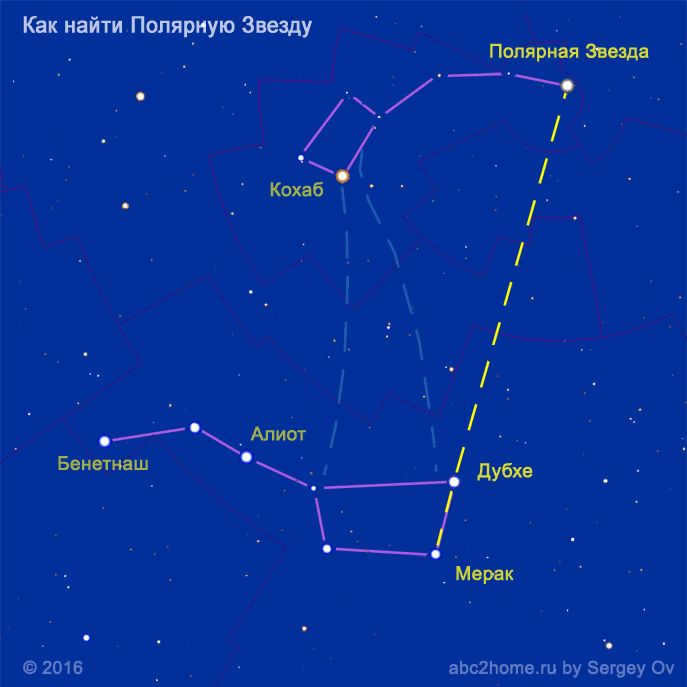
Fig. 6 – Finding Polaris is a very simple task! All you have to do is mentally connect the stars of the Big Dipper, specifically Merak and Dubhe.
A comprehensive guide on locating the stars of the Little Dipper: How to find the constellation Ursa Minor
In order to locate the constellation Cassiopeia, one must first learn how to find the Big Dipper and the Little Dipper constellations.
How to locate the constellation Cassiopeia
Perseus constellation [2]
Abbreviated version
To find Cassiopeia, you can use a method that works in any season. Simply connect the stars you already know to form a beam. For the most accurate result, continue the line from Aliot (ε UMa) to Polaris (α UMa). This will lead you directly to Gamma Cassiopeia. If you look closely, you’ll notice that the Big Bucket and the Throne of Cassiopeia are symmetrically positioned around Polaris.
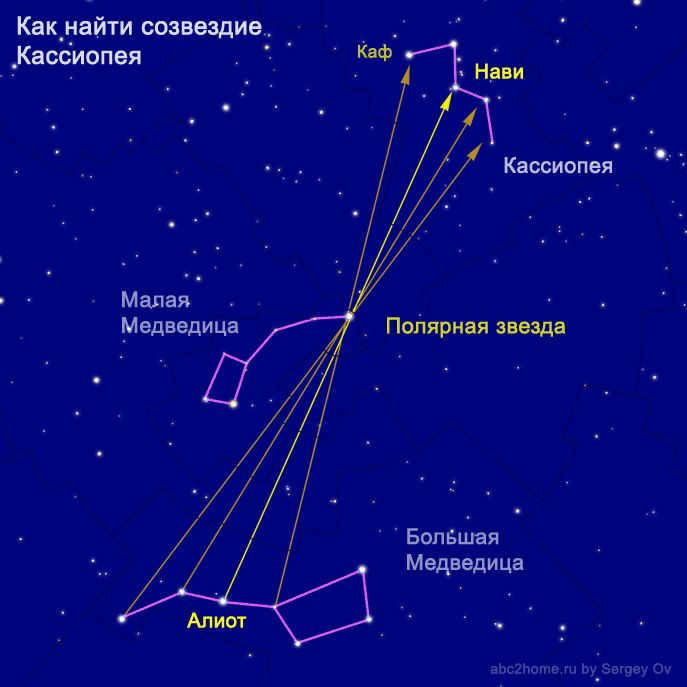
Fig. 7.Cas Finding the constellation Cassiopeia is a simple task! All you have to do is mentally connect the star Aliot of the Big Dipper and Polaris to the brightest star in Cassiopeia, Navi. (yellow line). There are also other methods: you can draw lines from any of the stars in the handle of the Big Dipper to Polaris, and they will all lead you to Cassiopeia.
In the spring late in the evening, you can observe the constellations of the Big and Little Bears, Cassiopeia, and the Throne in the same position as shown in Figure 7.Cas.
For a detailed guide on finding the stars of Cassiopeia, refer to the article How to Find the Constellation Cassiopeia.
If you want to locate the constellation Swan, you first need to learn how to find the constellation Cassiopeia.
The optimal period for observing the Swan constellation is from June to October, as it reaches its highest point in the evening sky during this time.
For those who are new to the Swan constellation, it is recommended to begin your search from the prominent Cassiopeia constellation (Fig.12.Cyg):
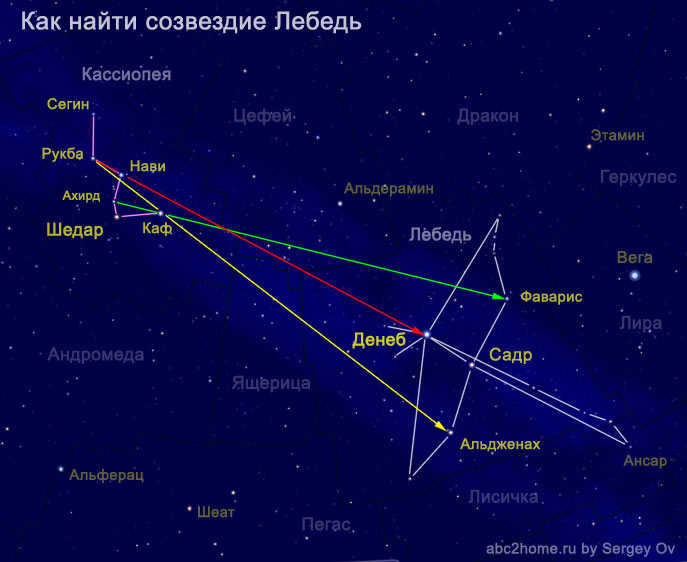
Fig.12.Cyg How to locate the constellation Swan using the stars of Cassiopeia
Rukba (δ Cas) -> Navi (γ Cas) -> α Cyg, Deneb (red arrow);
Rukba —> Kaf (β Cas) -> ε Cyg, Algenach (yellow arrow);
Ahird (η Cas) —> Kaf (β Cas) -> δ Cyg, Favaris (green arrow).
An elaboration of the options for locating the stars of the Swan: How to find the constellation of the Swan
In order to find the constellation Lyra, it is recommended to study the constellations Cassiopeia and Ursa Minor.
How to locate the Lyra constellation
Hercules constellation, abbreviated version [3]
The Lyra constellation can be observed all year round at latitudes in the Middle Belt of Russia and further north. The optimal time to explore the Lyra constellation is from June to October, when it is positioned in the zenith part of the sky during the evening.
When beginning to explore the Lyra constellation, it is recommended to start by locating the well-known Cassiopeia constellation (Fig. 20.Lyr.):
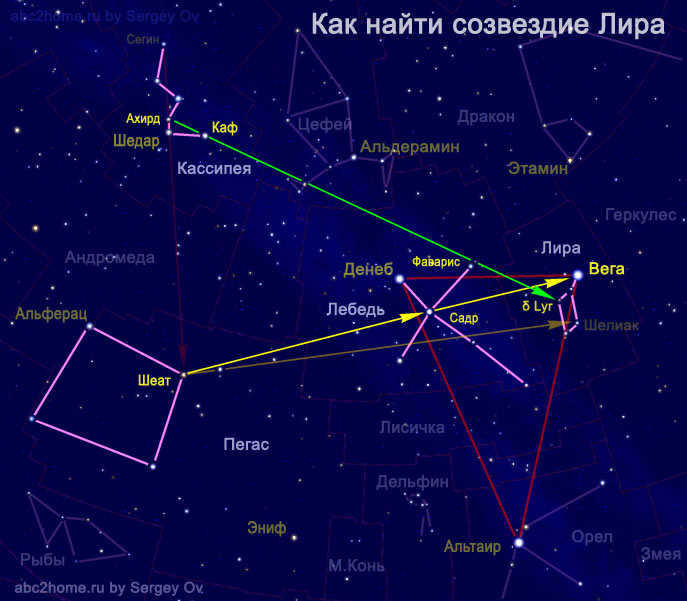
Figure 20.Lyr. A guide on how to locate the constellation Lyra using the stars from the constellations Cassiopeia, Pegasus, and Swan
The process of locating Lyra begins with the stars Achird (η Cas, 3.46 m, yellow) and Caf (β Cas, 2.28 m, white-yellow), extending the line (green) beyond the constellation Cassiopeia, passing near Zeta Cepheus (ζ Cep, 3.39 m, orange), and continuing along this line towards Favaris of the Swan (δ Cyg, 2.86 m, blue-white). Without deviating from this line, extend it further to reach Delta Lyra, δ 2 Lyrr” (shown as “20.Lyr” in the figure, indicated by the green arrow).
Detailed instructions on how to find the stars of Lyra: A guide on how to find the constellation Lyra
To locate the constellation of Eagle, one must be familiar with either the constellations Cassiopeia and the Big Dipper, or the constellation Lyra.
How to locate the constellation of Eagle
Hercules constellation [3]
Abbreviated version
The Eagle constellation can be observed in the latitudes of the Middle Belt of Russia and northward, from February to December. The best time to view the Eagle constellation is between July and November, during the evening.
As the Eagle constellation sets, it is important to have reference points from well-known constellations that do not set.
Fortunately, the Eagle constellation benefits from this – the primary starting points for its search are the constellations Big Dipper and Cassiopeia. (Fig.17.Aql.):
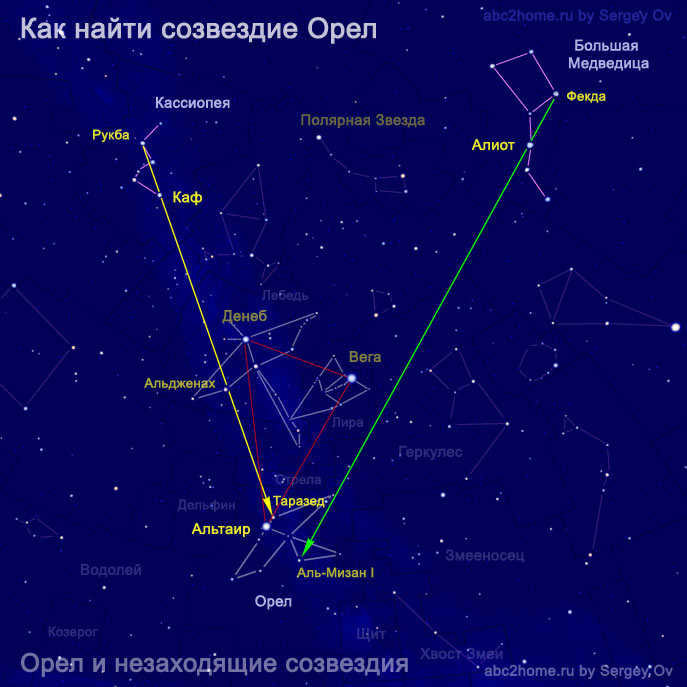
Figure 17.Aql. The method of locating the Eagle constellation from the Big Dipper and Cassiopeia constellations, which are visible all night in Russia
The furthest sighting of the stars in the constellation of Eagle is the line of sight that extends from the stars of the Big Dipper, specifically Phecda (γ UMa; 2.41 m) to Aliot (ε UMa, 1.76m), and reaches the fifth brightest white-yellow star, Al-Mizan I (δ Aql, 3.36 m). This line, marked with a green arrow in the figure, does not pass through any other bright stars.
Another line of sight, starting from the “Throne” (W asterism) of the constellation of Cassiopeia, goes from Rukba (δ Cas; 2.66 m, white) to Kaf (β Cas; 2.28 m, white-yellow), as shown by the yellow arrow in Figure 17. This line leads to the second brightest star in the constellation of Eagle, Tarazed (γ Aql, 2.72 m, orange). It is important to be careful when using this line, as it first passes through the orange star Algenach (ε Cyg; 2.46 m) in the constellation of Swan, before reaching Tarazed in the constellation of Orla.
An explanation of the methods for locating the stars of the Eagle: Discovering the constellation of Eagle
In order to locate the constellation Sagittarius, one must first be able to identify the constellations of the Ursa Minor and Lyra or the Summer Triangle asterism
Locating the constellation Sagittarius
Astrological constellation [4]
Abbreviated version
The constellation Sagittarius is not prominently visible above the horizon at mid-latitudes, as only the northern portion of the constellation is observable. The “arrow” of Sagittarius is only visible in the southern part of the sky (declination ranging from -45.5° to -12.03°).
The optimal period for studying and observing the constellation Sagittarius is between July and September, when it is visible in the evening sky (right ascension ranging from 17 h 36 m to 20 h 20 m).
1. To find the constellation of Sagittarius, the easiest method is to start at Polaris and move towards Alpha Lyrae – Vega (Fig. 6.Sgr):
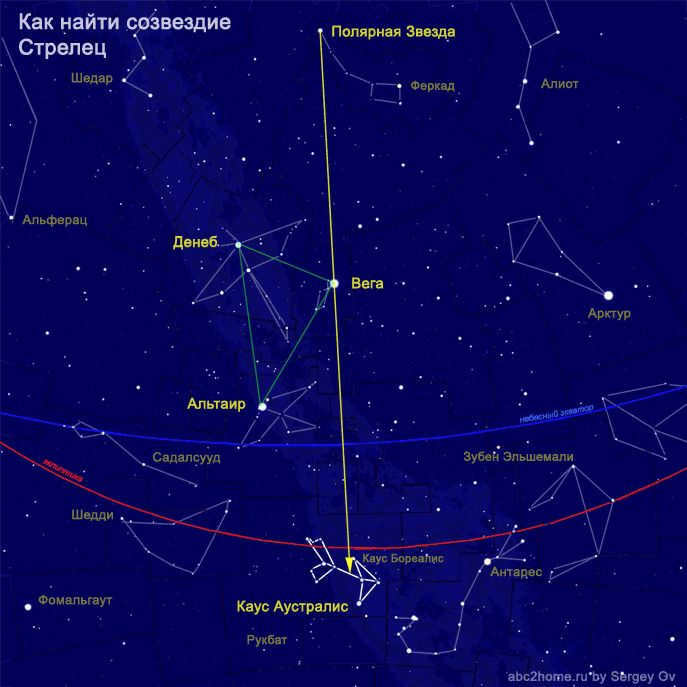
Figure 6.Sgr. Discovering the Sagittarius constellation in the northern sky
(When using the image, please maintain its original numbering Figure 6.Sgr — “The Sagittarius constellation”, and provide a reference to the original source.)
If you draw a line from Polaris to Lyra and extend it the same distance, it will lead you to the Sagittarius asterism. If the line extends beyond the southeastern horizon, the Archer will soon rise. If the line crosses the western part of the sky and goes below the horizon, you will need to start observing early the next day to see the Sagittarius constellation.
To locate the Sagittarius constellation, you just need to be able to find the Big Dipper in the western sky.
Discovering the Volopassus Constellation
The Big Dipper Constellation Explained [1]
An Abridged Account
The constellation of Volopassus can be fully observed every night in Moscow, provided that the weather conditions allow for visibility.
In modern star guides, it is not customary to search for the Volopassus constellation. In fact, there is no need to search for it as the handle of the Big Dipper points directly towards Volopassus. However, it is common to search for the brightest star, Actur, using a specific scheme as shown in Figure 2, while repeating the following words:
"And we will trace the arc here. And then we will trace the arc there.
And then you will find Spica and Arcturus!"
(similar to The Hare Song)
No one mentions the location of the center of the circle for that arc.
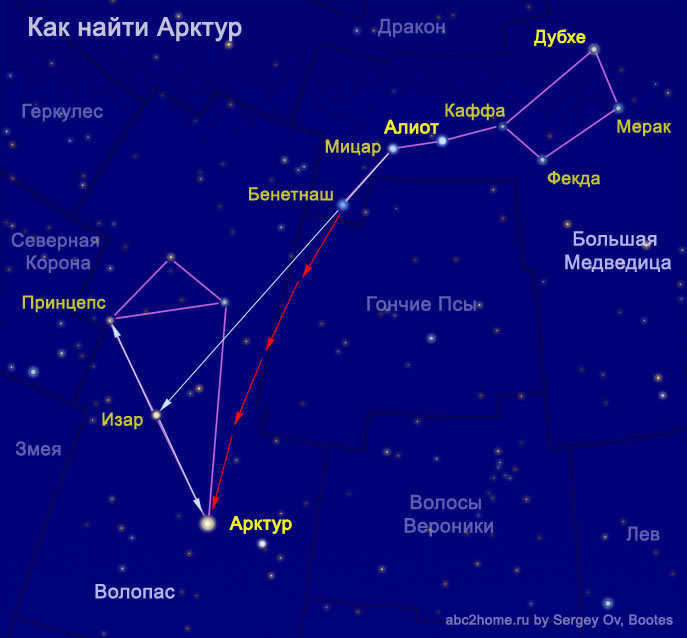
Figure 2. What is the method for locating Arcturus with the help of the stars in the Big Dipper?
I am unable to mentally envision arcs on the starry sky, so my first step is to mentally draw a line passing through Mizar and Benetnash (indicated by the light blue arrow in Fig.2).
If the visibility of the starry sky is good, this line will intersect exactly with the second brightest star of Volopassus – Izar. Equidistant from Izar, you will find: to the left of the line – the brightest star Arcturus, and to the right – the faint star Princesa.
In the event that Izar cannot be seen along the line (due to haze or city sky light), you should draw a line to Arcturus slightly to the left of the original line, gradually deviating to the left (indicated by the red arrows in Fig. 2, representing four lengths of the handle of the Big Bucket). This technique is most effective when all the stars of the constellation are visible, and it will always lead you to Arcturus without any errors!
To locate the constellation Orion successfully, one must possess the ability to locate either the Big Dipper or Cassiopeia constellations.
Locating the constellation Orion
Orion constellation [5]
Abbreviated version
The Orion constellation can be observed in the early hours of the morning during the beginning of autumn in Moscow.
Another method to locate Orion involves referencing the figure 8.Ori:
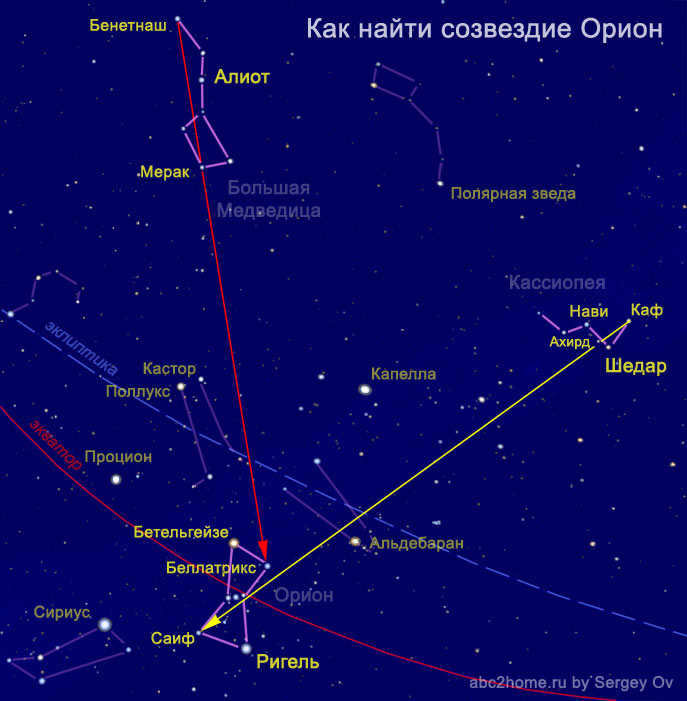
Fig. 8.Ori. What is the method to locate the Orion constellation by using the stars of the Big Dipper and Cassiopeia?
One needs to mentally visualize a line passing through Benetnash and Merak, the stars of the Big Dipper, in order to locate the star representing Orion’s left shoulder, Bellatrix.
The line connecting Kaf and Ahird will first cross near Aldebaran, then pass through Orion’s belt, ultimately leading to Saif, which is positioned at the feet of the hunter.
(When reproducing the figure, it is necessary to maintain the original article’s numbering Figure 8.Ori — “Orion constellation,” and include a link to the original source.)
A comprehensive guide on various methods to locate the stars of Orion: How to find the Orion constellation
To locate the constellation Virgo, it is necessary to have the ability to locate the constellations of Ursa Minor and Ursa Major.
Locating the constellation Virgo
Constellation of the Zodiac [4]
Abridged version
In order to find the constellation Virgo, the first step is to locate its brightest star, Spica.
The most convenient method is to use the stars from nearby constellations to locate Alpha Virgo, although it is important to note that these stars may not always be fully visible.
1. The most common approach to finding the constellation Virgo is by coming from the north using the constellations of Ursa Minor and Ursa Major:
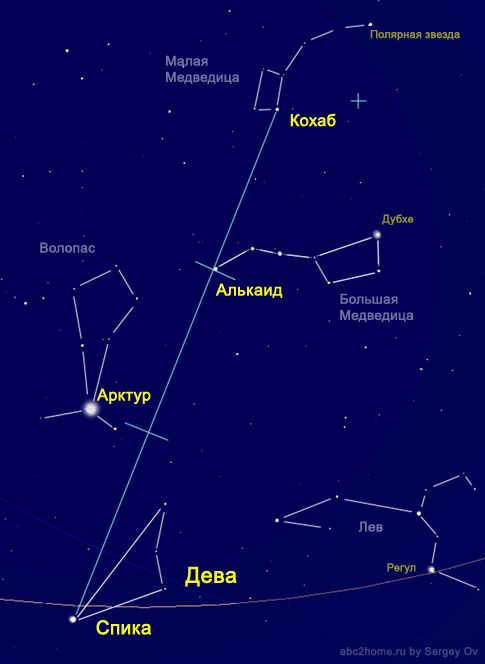
Figure 2: Locating the constellation Virgo in the northern sky
2. If you are familiar with the constellation Volopassus, it is worth noting that the asterism Parachute is positioned in a way that it will lead you directly to Spica in its intended “landing” spot – this provides the simplest method for finding the constellation Virgo.
Exploring various approaches to spotting the stars of Virgo: A guide to locating the constellation Virgo
To find the constellation Aries, you must first be able to locate the constellation Cassiopeia
Guide to Locating the Aries Constellation
To observe the Aries constellation from the latitude of Moscow, you can do so fully or partially between June and March. For a more detailed observation, it is recommended to focus on the period from September to February. Keep in mind that there is no direct line connecting the bright stars of Cassiopeia to the brightest stars of Aries (see Fig.11). However, there is one line that passes through Cas (β Cas; 2.27 m ) and Shedar (α Cas; 2.24 m ), and continues to the star Alamak (γ1 And; 2.1 m ) in the Andromeda constellation, leading to the third brightest star of Aries – Bharani (41 Ari; 3.61 m ).
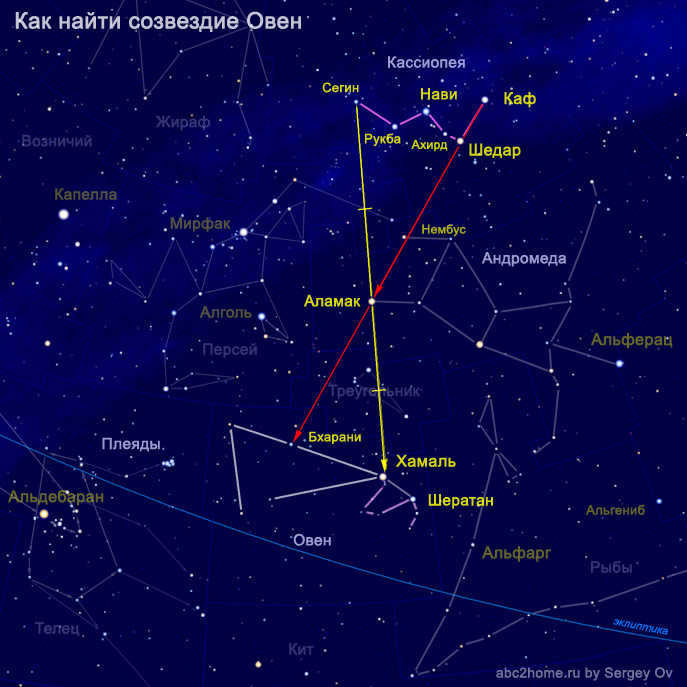
Figure 2. How to locate Aries constellation using Cassiopeia and Andromeda stars
The primary line of sight in Figure 2 is the red line connecting the stars Cas (β Cas) and Shedar (α Cas) in the Cassiopeia constellation. However, it is not possible to directly reach the stars of Aries along this line. Instead, this line will first intersect with the relatively dim but noticeable star Nembus (51 And; 3.51 m ) in the adjacent Andromeda constellation, and then it will precisely intersect with Alamac (γ1 And). Only if the yellow line is extended by a similar distance, will we arrive at the equally bright but bluish star Bharani (41 Ari), which is close to Nembus.
Various methods for locating the stars of Aries are further explained in: How to find the constellation Aries
To successfully locate the Taurus constellation, it is necessary to have knowledge of the Big Dipper, Little Dipper, or Orion constellations.
Locating the Taurus Constellation
Zodiacal Constellation [4]
Abbreviated Version
In the latitudes of Central Russia, the Taurus constellation can be fully or partially observed between July and April. The optimal period for a detailed observation of the Taurus constellation is from October to February, inclusive.
The Taurus constellation can be easily located by using the Pleiades (also known as the micro-bucket), Geyades (V-asterism), and the Orion constellation.
Although, if you are new to learning about Taurus, it is recommended to start your search by identifying the familiar constellations of the Little and Big Dipper. These constellations are always visible in our night sky, allowing you to determine the distance Taurus is situated behind the horizon (Fig.14.Tau.):
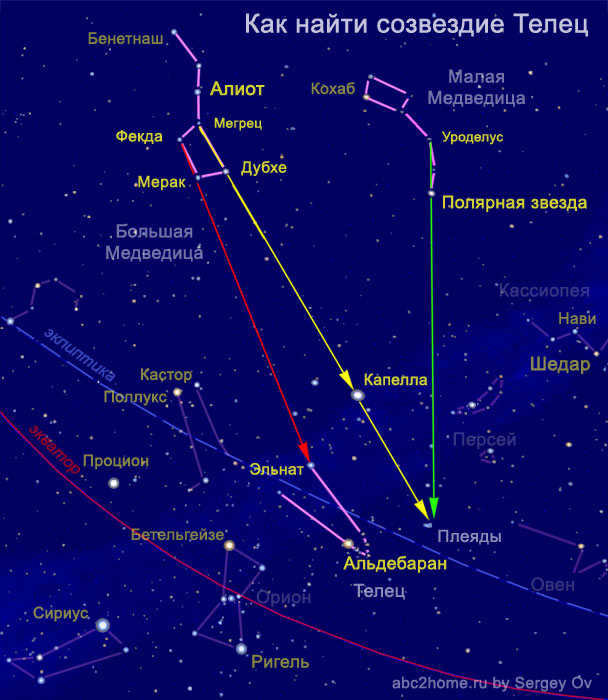
Fig. 14.Tau. A guide to locating the Taurus constellation by utilizing the constellations of the Ursa Minor and Ursa Major
(When duplicating the image, please ensure that the numbering remains the same as in the original article Fig.14.Tau — “Constellation Taurus“, referencing the original source is obligatory).
If you extend the imaginary line from Megretz (δ Uma) – Dubhe (α Uma) beyond the constellation of the Big Dipper, it will eventually reach the brightest star Capella (Alpha Ascendant) at the edge of the Milky Way. Continuing beyond the Milky Way, this line will lead you directly to the star cluster known as the Pleiades (indicated by the yellow arrows). Another accurate way to reach the Pleiades cluster is by following the green-colored line that emanates from the handle of the Little Bear, starting from the star Urodelus (ε UMi) and ending at Polaris (α UMi).
A third option is to draw a line from the star Fekda (γ UMa) to Merak (β UMa) and then extend it all the way to the Milky Way. This line will point directly to the star Elnath (indicated by the red arrow).
1. The group of constellations that make up the Big Dipper includes:
Dragon, The Little Dipper, Northern Crown, Wolopassus, Giraffe, Lynx, Little Lion, Hound Dogs, Veronica’s Hair, and, of course, Big Dipper.
Altogether, there are 10 constellations!
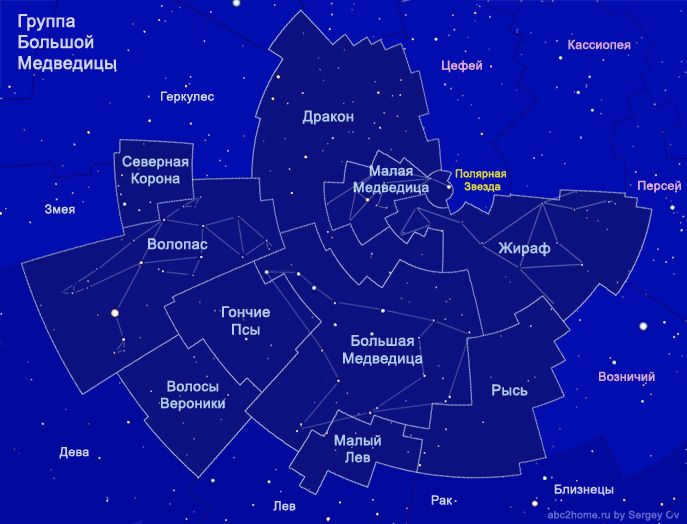
Fig. 16.Uma. Collection of constellations from the Ursa Major family (Ursa Major family, Big Dipper family).
By the way, if you take a closer look, the outer shapes of the constellation collection from the Big Dipper resemble a motorized version of Casper the Friendly Ghost.
2. The Perseus collection includes the constellations:
Whale, Pegasus, Andromeda, Ascendant, Perseus, Cassiopeia, Cepheus, Lizard, and Triangle.
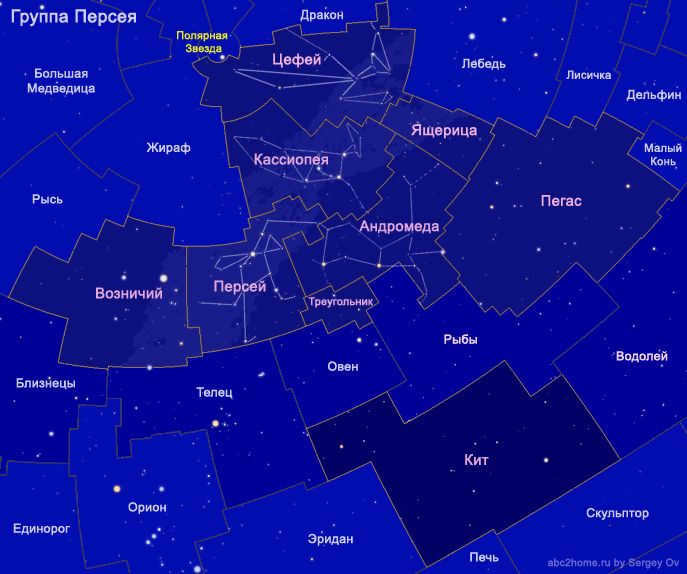
Figure 16.Per. The constellation cluster known as Perseus
The constellations Cetus, Pegasus, Andromeda, Perseus, and Cepheus are connected by a shared mythical theme, while the constellations Ascendant, Lizard, and Triangle, so to speak, “fit in” with the group due to their common boundaries (or because there is no other suitable place for them.).
3. The constellations included in the Hercules cluster are:
Swan, Lyra, Hercules, Fox, Arrow, Eagle, Shield, Serpent, and Serpentine.
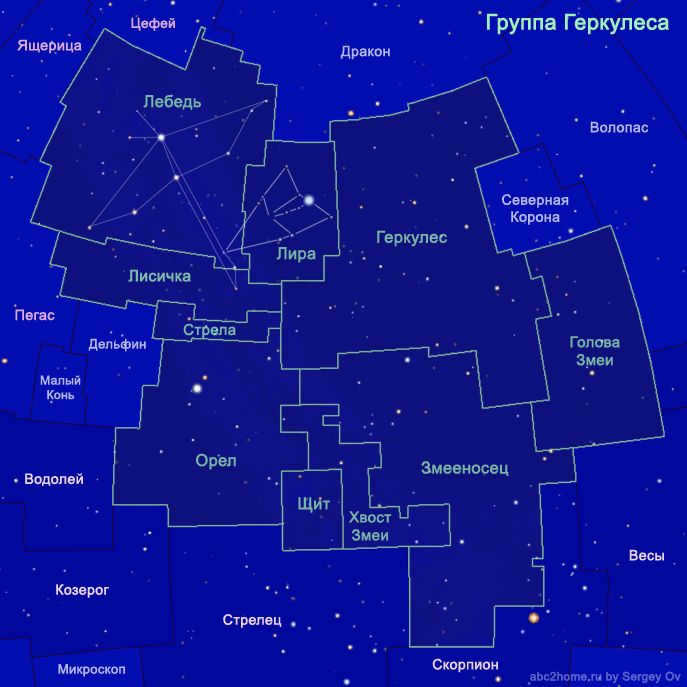
Figure 16.Her. The constellation group of Hercules
4. The constellations that give their names to the signs of the zodiac, with the exception of Libra, which was actually created based on the zodiac sign, mainly using the stars from the Scorpio constellation. The zodiacal group includes the following constellations: Leo, Virgo, Libra, Scorpio, Sagittarius, Capricorn, Aquarius, Pisces, Aries, Taurus, Gemini, Cancer.
5. The constellations that belong to Orion’s group are:
Canis Major, Lepus, Monoceros, Canis Minor, and of course, Orion.
Total: 5 constellations.
